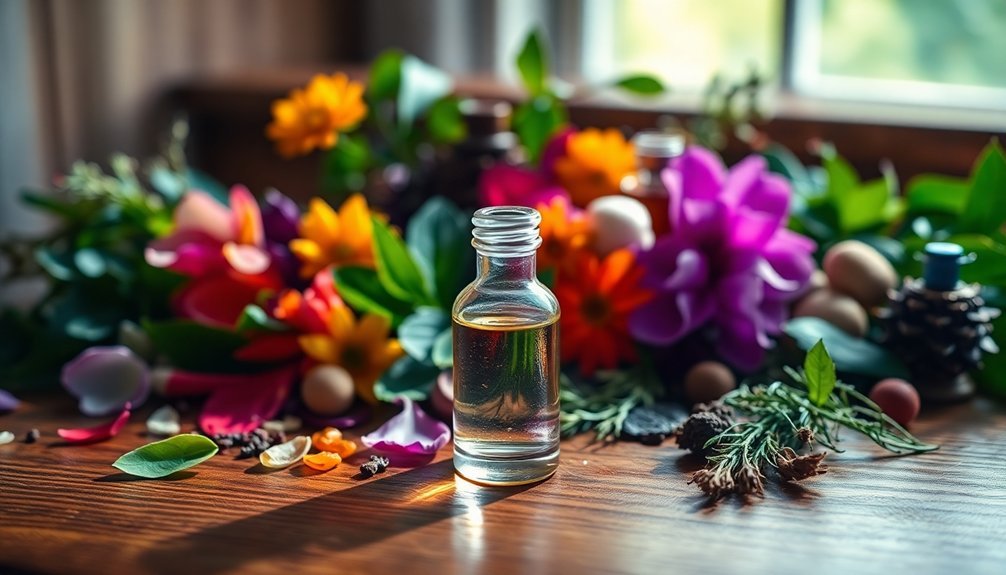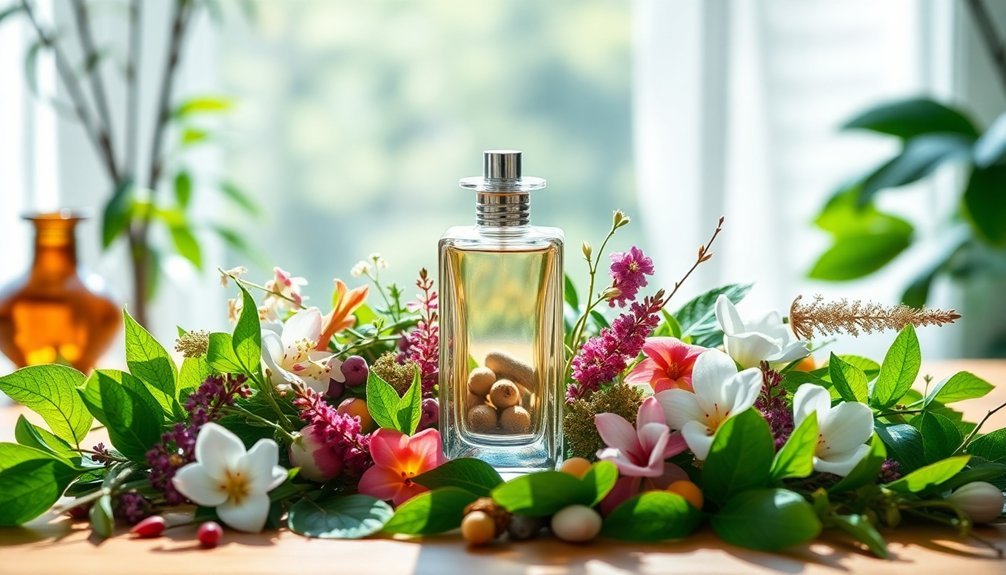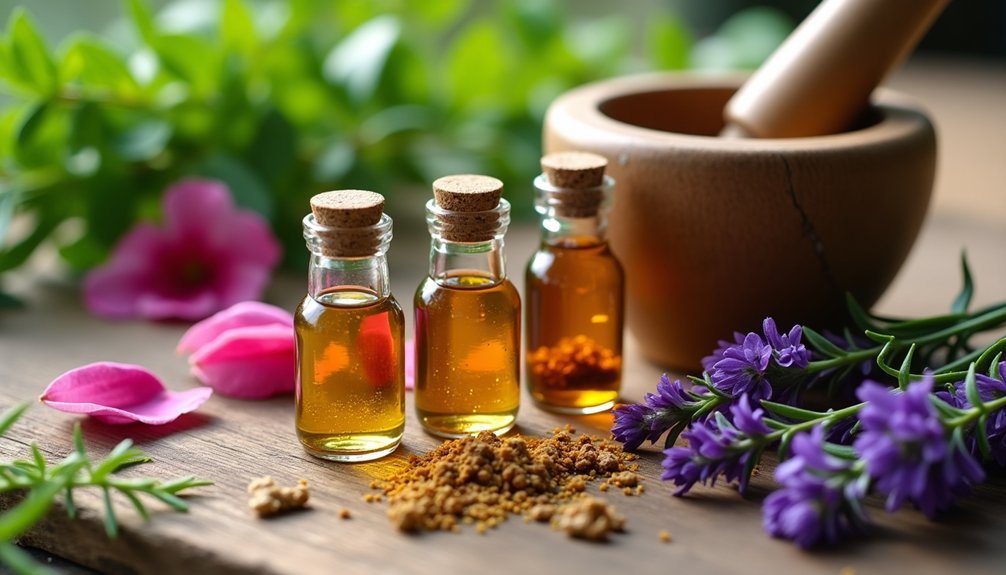When creating botanical perfumes, you'll need to master three essential rules. First, follow the Rule of Thirds by blending your top, middle, and base notes in ratios like 3:2:1 or 4:2:1. Second, practice progressive blending by starting with just 2-3 harmonious oils and allowing 24 hours for maturation. Third, balance your personifiers (distinctive scent markers) with natural extenders like jojoba oil. These foundational principles will reveal the secrets to crafting sophisticated natural fragrances.
Understanding The Sacred Rule of Thirds in Perfume Notes

When creating botanical perfumes, mastering the Rule of Thirds serves as your foundation for achieving balanced, harmonious fragrances. This principle suggests working with a ratio of 3:2:1 or 4:2:1 for top, middle, and base notes, though you can adjust these proportions to match your vision.
Top notes, like citrusy neroli and bergamot, provide your initial impression but evaporate quickly. Middle notes, such as jasmine and rose, form the heart of your blend and last several hours. Base notes, including vetiver and patchouli, anchor your creation with their long-lasting presence. Using amber or cobalt bottles will protect your blends from light degradation.
You'll want to blend drop by drop, starting with small amounts to maintain precise control. Remember that some essential oils exhibit multiple note characteristics, adding complexity to your final composition. Always document your process for future reference.
Mastering The Art of Progressive Blending
Three key principles guide progressive blending in botanical perfumery: patience, precision, and perception.
When you're creating your blend, start by selecting two to three harmonious oils and add them drop by drop, allowing your nose to evaluate each addition carefully. You'll want to follow the 30-50-20 ratio of top, middle, and base notes as your foundation. Islamic cultures revolutionized perfumery through their development of steam distillation techniques.
Let your blend rest for 24 hours between adjustments to allow the scents to mature and integrate. Use standardized droppers for accuracy, and maintain detailed records of each addition in your notebook.
If you need to refine the scent, incorporate blender oils like bergamot or lavender to harmonize the composition. Remember to use fixative oils such as vetiver or benzoin to enhance longevity and depth.
Balancing Personifiers With Natural Extenders

Building upon the foundations of progressive blending, the art of balancing personifiers with natural extenders brings depth and character to your botanical perfume.
You'll want to combine powerful base notes like Hindi ouds or ambrette seed tinctures with lighter, diffusive top notes to create a well-rounded composition.
Start by selecting your personifiers – these are your distinctive scent markers like vanilla pods or animal musks – and blend them with natural extenders such as jojoba oil.
Don't forget to take into account the standard note ratios (1:1:1, 3:2:1, or 4:2:1) as your starting point. Consider keeping a detailed blending notebook to track your exact measurements and combinations.
You'll need to let your blend rest for at least 24 hours, though a month is better, allowing the personifiers and extenders to meld completely.
Frequently Asked Questions
How Long Should Botanical Perfumes Mature Before Their First Use?
You'll want to let your botanical perfume mature for at least 4-6 weeks, though waiting 6 months can give you better results. During this time, store it in a dark, cool place.
Can Pregnant Women Safely Wear Botanical Perfumes?
Yes, you can wear botanical perfumes while pregnant, but you'll need to choose phthalate-free formulations and test for sensitivity first. Stick to EWG-verified brands and use minimal amounts to guarantee safety.
What's the Best Way to Store Botanical Perfume Ingredients?
Store your botanical perfume ingredients in dark glass bottles, away from sunlight and heat. Keep them in a cool, dry place with tight seals. Don't expose them to humidity or temperature fluctuations.
How Do Seasonal Changes Affect the Performance of Botanical Perfumes?
You'll notice your botanical perfumes behave differently across seasons. In summer, they're more intense as heat boosts evaporation. In winter, they last longer but stay closer to your skin, emphasizing deeper notes.
Why Do Some Botanical Perfumes Change Color Over Time?
Your botanical perfumes change color due to oxidation when exposed to air, UV light breaking down ingredients, temperature fluctuations affecting stability, and the natural aging of botanical ingredients as they interact with environmental factors.
In Summary
You'll find botanical perfume blending becomes second nature once you've mastered these three fundamental rules. By following the rule of thirds, practicing progressive blending, and skillfully balancing personifiers with natural extenders, you'll create unique, harmonious fragrances that sing. Remember, there's always room for creative interpretation, but these guidelines will serve as your foundation for crafting exceptional natural perfumes.





Leave a Reply